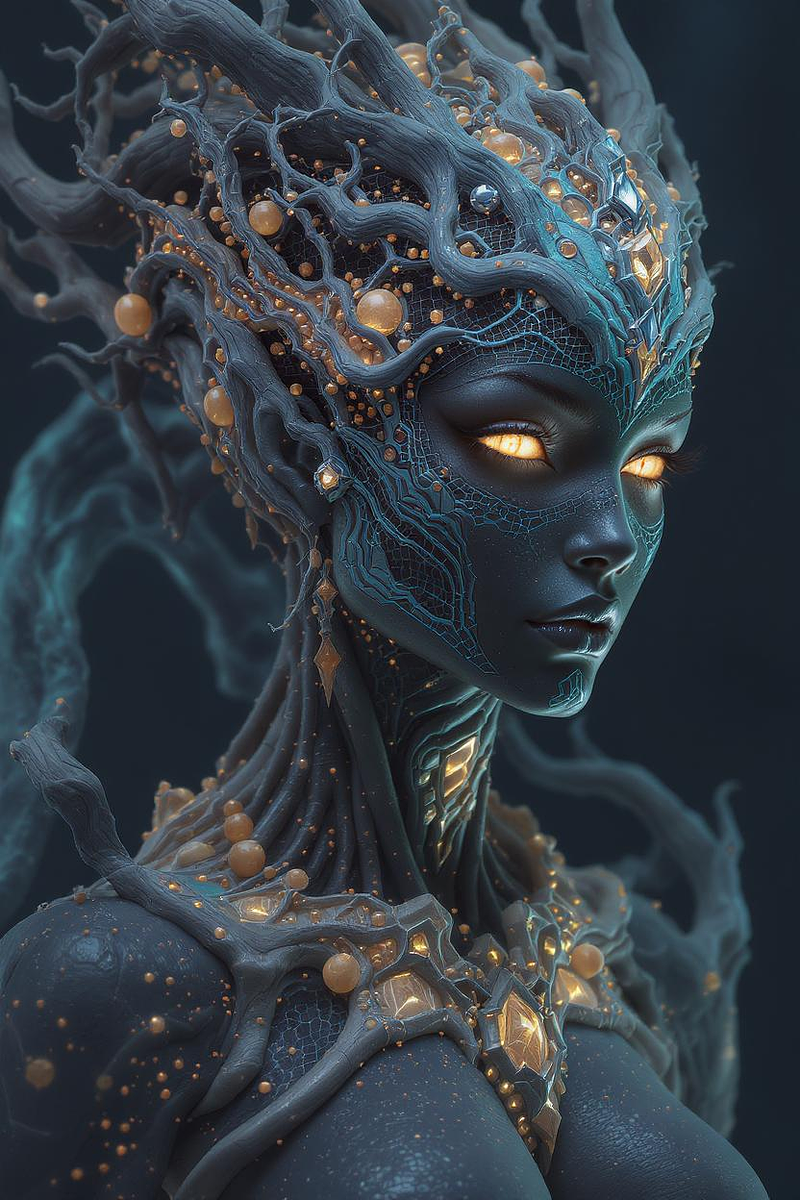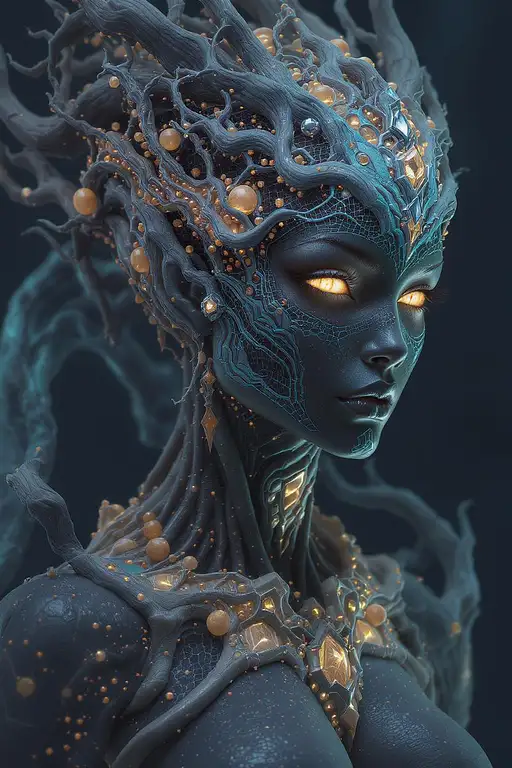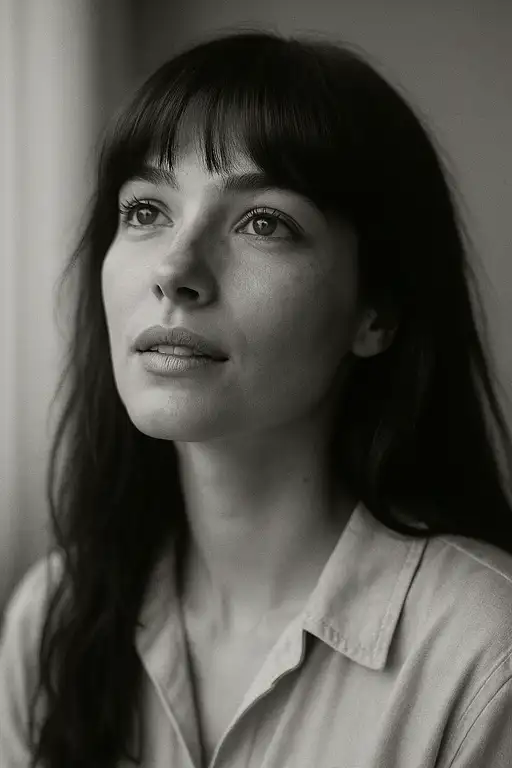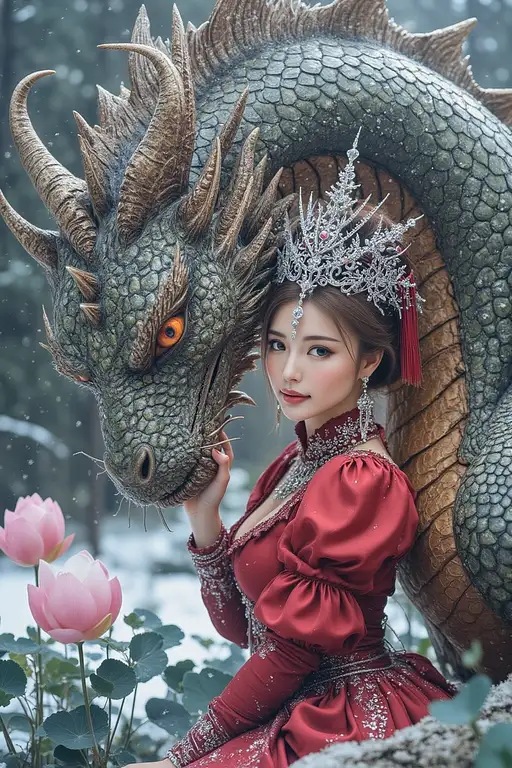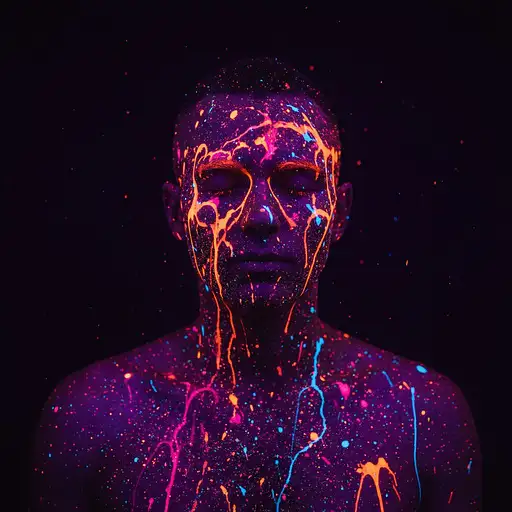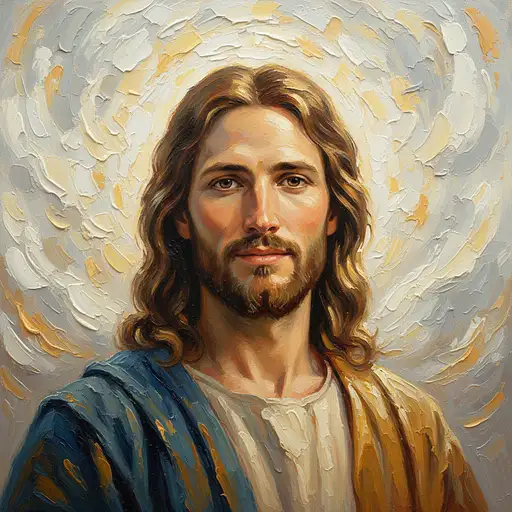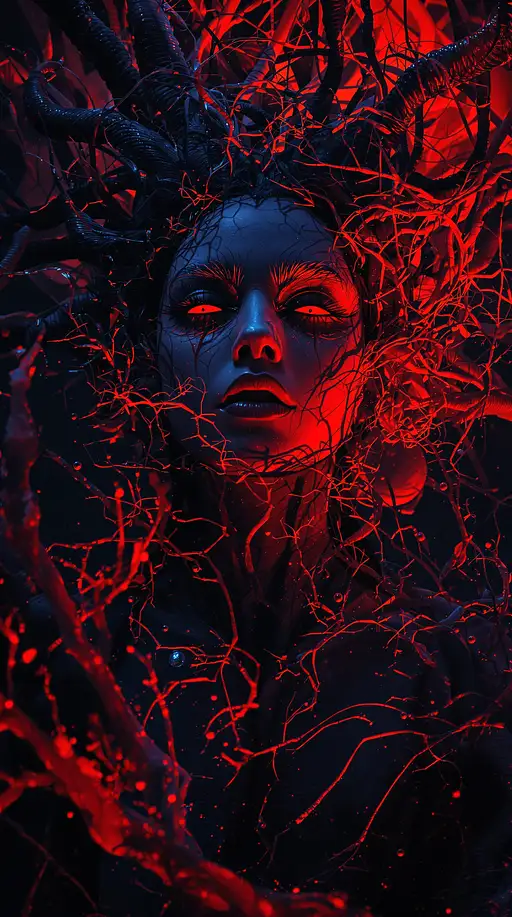5 months ago
This is a hyper-realistic, high-detail digital portrait of a young Korean woman who is a cyborg. The image masterfully juxtaposes delicate, organic beauty with complex, inorganic machinery, creating a captivating and thought-provoking piece of science fiction art. The overall aesthetic is clean, elegant, and ethereal, with a carefully controlled color palette.
The Subject's Face and Human Features:
The woman has a face of almost supernatural perfection. Her skin is pale and flawless, like porcelain, with a smooth, matte finish. Her facial structure is delicate, with high cheekbones, a small, straight nose, and a well-defined jawline on her visible human side.
Eyes: Her eyes are the most striking feature. They are a luminous, piercing emerald green, rendered with incredible detail. The irises have intricate patterns of light and dark green, and a dark limbal ring that makes them stand out dramatically against her pale skin. They are framed by long, dark, perfectly separated eyelashes and subtle, expertly applied eyeliner that creates a slight cat-eye effect. Her gaze is direct and engages the viewer with a neutral, almost serene expression.
Eyebrows: Her eyebrows are perfectly shaped with a gentle arch, filled in with a soft brown that complements her features without being harsh.
Lips: She has full, soft-looking lips with a defined Cupid's bow. They are colored in a natural, dusky pink shade with a subtle satin sheen, echoing the color of her hair.
Cybernetic Enhancements:
The woman's human features are seamlessly integrated with extensive cybernetic enhancements, primarily on the right side of her face and neck.
Facial and Head Mechanics: A complex mechanical structure replaces parts of her head and face. It begins at her right temple and extends down her cheek and jaw. This section is composed of articulated, segmented plates in a matte, off-white and light gray finish, with some plates having a subtle rose-gold or pinkish tint that harmonizes with her hair. Behind her head and over her ear is a larger, more robust piece of machinery with circular vents, joints, and what appear to be pistons or hydraulic connectors.
Neck and Torso: Her neck is entirely mechanical, consisting of a dense, intricate web of gray and black wires, cables, and tubes that flow downwards, suggesting a fully robotic torso beneath. This creates a stark contrast between the soft skin of her face and the complex, functional machinery supporting it.
Integration: The transition from skin to machine is depicted flawlessly. The mechanical parts fit snugly against her skin, and strands of her hair weave in and out of the cybernetics, suggesting a long-term, permanent fusion of the organic and the artificial.
Hair:
Her hair is long, voluminous, and cascades in soft waves around her face and shoulders. The color is a beautiful pastel pink, reminiscent of cotton candy or cherry blossoms, with subtle variations in tone, including lighter, almost-white highlights that catch the light. The texture appears silky and fine, and it beautifully softens the hard edges of the mechanical components it intertwines with.
Lighting, Composition, and Color Palette:
The portrait is a tight close-up, focusing entirely on her head and shoulders. The lighting is soft and diffused, coming from the front and slightly to the left, which evenly illuminates her features and highlights the three-dimensional details of the cybernetics without creating harsh shadows. The background is a blurry, out-of-focus cool gray, which ensures that the subject is the sole focus.
The color palette is a sophisticated blend of soft, muted tones. It is dominated by the pastel pink of her hair, the porcelain white of her skin, and the cool grays and off-whites of the machinery. The vivid emerald green of her eyes serves as a powerful, singular accent color, drawing the viewer's attention and giving the character a sense of life and soul amidst the mechanics.

